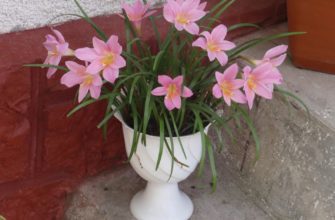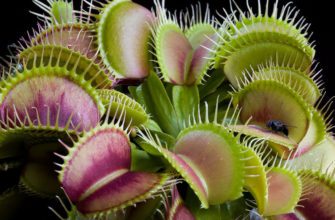- ABSTRACT EXPRESSIONISM
- J. Pollock. Moby Dick.1943
- F.Klein. Black on green, red and yellow.1948
- ABSTRACTIONISM
- V. Kandinsky. Composition 8 1913.
- F. Leger Girl with a Flower. 1954
- AVANT-GARDISM
- P. Picasso Three Musicians 1921
- ACADEMISM
- A. Cabanel Phaedra. 1880
- A. Bouguereau Rest during harvest. 1865
- A. Alma-Tadema The Discovery of Moses. 1904
- ACTIONISM
- Christo and Han-Claude. Gate No. 53 2006
- K. Oldenburg. Spoon bridge holding a cherry. 1985
- ANACHRONISM
- K.M. Mariani The Hand Guided by the Mind.1983
- ANALYTICAL ART
- P. Filonov. Peasant Family 1914
- P. Salzman Triple Self-Portrait. 1932
- Tatyana Glebova Color output
- UNDERGROUND
- Oscar Rabin, "Baths (Smell the Moscow Eau de Cologne)", 1966.
- Lev Kropivnitsky
- A. Zverev Portrait 1969
- AR BRUT
- Antoni Tapies Drawing - 4. Series Berlin Drawings.
- J. Dubuffet Jazz band, 1955
- J. Dubuffet Self-Portrait, 1958
- ARTE POVERA
- Mario Merz, Petra's Hut project, 1982
- Mario Merz untitled
- L. Fontana Title
- BAROQUE
- Michelangelo Merisi de Caravaggio, Bacchus.1593 - 1594. Uffizi Gallery. Florence. Italy
- Simon Vouet, Saint Cecilia with an Angel. First half of the 17th century. Hungarian Museum of Fine Arts. Budapest. Hungary
- BAUHAUS
- Ancient Sound, Abstract on Black by Paul Klee 1925
- Paul Klee: Klee Analysis of Various Perversities, 1922, Collection
- Vasily Kandinsky, St. George and the Dragon (1914-15).
- Wassily Kandinsky. Untitled First Abstract Watercolor. 1910 -1913
- VERISM
- D. Fattori. On the coast. 1893
- S. Lega Italian Barsaglieri leading Austrian prisoners, 1861
- VIDEO ART
- Nam June Paik Robot Family, 1976
- Nam June Paik New Work, 1983
- GEOMETRIC ABSTRACTION
- Lyubov Popova Composition, 1917
- Mikhail Larionov Bathers, 1909
- Olga Rozanova Composition with a Train, 1911
- HYPERREALISM
- Richard Estes. Street
- Don Eddy. Old Model Cars
- Ralph Goings. Summer Day
ABSTRACT EXPRESSIONISM
J. Pollock. Moby Dick.1943
A movement in abstract art that emerged in the United States in the 1940s and was represented primarily by the work of artists of the New York School. Abstract expressionism continued the "liberation" of art from any control of reason and logical laws, setting as its goal the spontaneous expression of the artist's inner world, his subconscious in chaotic, abstract forms and taking as its main creative principle the spontaneous, automatic application of paint to canvas, occurring solely under the influence of mental and emotional states….
F.Klein. Black on green, red and yellow.1948
In a fast rhythm, the artists covered the surface of the canvas with large, energetic brushstrokes, often using the technique of dripping (spattering paint or squeezing it out of a tube). The process of creating a painting often took place in public: an entire performance was played out before the audience, in which the artist’s gestures and movements played as active a role as the streams of paint falling and spilling across the canvas.
Abstract Expressionism dominated American culture until the early 1960s, becoming one of the first serious movements in American painting and influencing the development of world art.
ABSTRACTIONISM
V. Kandinsky. Composition 8 1913.
One of the main artistic trends in 20th century art, in which the structure of the work is based exclusively on formal elements - lines, color spots, abstract configuration. Abstract works are detached from the forms of life itself: non-objective compositions embody the artist's subjective impressions and fantasies, the flow of his consciousness, they generate free associations, movements of thought and emotional empathy.
It is impossible to name either the exact time of the emergence of abstractionism or its founder. The recognized inspirers of abstractionism are considered to be the artists Vasily Kandinsky, Kazimir Malevich, Piet Modrian, František Kupka, Robert Delaunay, who outlined the main provisions of this movement in their theoretical works and programmatic statements.
F. Leger Girl with a Flower. 1954
Abstractionism originated as a narrow trend in fine art. In the early 1930s, associations of abstractionists began to emerge ("concrete art" - 1930, "circle and square" - 1930, and others), which gathered artists of different nationalities and trends under their banners. By the mid-1930s, interest in abstractionism had sharply declined, and these associations fell apart. It was reborn in the United States, where abstract expressionism emerged in the early 1940s, operating with non-objective forms for the spontaneous expression of the artist's inner world.
The last popular form of abstract art was pop art, which emerged in the 1960s, after which abstract art faded into obscurity.
AVANT-GARDISM
P. Picasso Three Musicians 1921
A set of innovative, rebellious trends and directions in the artistic culture of the 20th century. At different historical stages, the role of the avant-garde was played by successive trends: the 1900s–1910s were the time of the emergence of Fauvism, Cubism, Futurism, Expressionism, Dadaism, and abstract art; in the 1920s–1930s, surrealism came to the fore; in the post-war period, new trends in abstractionism emerged: abstract expressionism, tachisme, informal art, etc.; the 1960s–1970s were the transitional era from the “classical” avant-garde to the neo-avant-garde, or postmodernism, with its components: actionism, pop art, conceptualism, kinetic art, and other art practices.
ACADEMISM
A. Cabanel Phaedra. 1880
A trend in fine arts, the basis for the development of which are art academies. The history of the development of academicism is associated with the "Academy of Those Who Have Entered the Right Path" in Bologna (around 1585), the French Royal Academy of Painting and Sculpture (1648), and the Russian Academy of the Three Most Noble Arts (1757). The activities of all institutions were based on a strictly regulated system of education, oriented toward the great achievements of previous eras - Antiquity and the Italian Renaissance, from which individual qualities of classical art were consciously selected, accepted as ideal and unsurpassed.
The path of academicism in art was not marked by any great discoveries or achievements. Due to its artificiality ("made") and eclecticism, it is not an artistic style.
A. Bouguereau Rest during harvest. 1865
Academicism flourished in the 19th century. In France, this trend is associated with the work of such renowned masters as Jean Auguste Dominique Ingres, Adolphe William Bouguereau, Alexandre Cabrnel, Paul Delaroche, Jean-Léon Gérôme, Paul Joseph Jamin, whose works are distinguished by their unrivaled mastery of execution.
The St. Petersburg Academy of Arts also nurtured within its walls a galaxy of world-famous academic artists: Karl Bryullov, Alexander Ivanov, Henryk Semiradsky, and Fyodor Bruni.
A. Alma-Tadema The Discovery of Moses. 1904
In our time, the concept of “academicism” has gone beyond the scope of an artistic movement: it has acquired additional meaning and has come to be applied to the works of artists who have a systematic artistic education and classical skills in creating works of high technical skill.
ACTIONISM
Christo and Han-Claude. Gate No. 53 2006
A general name for a number of forms that emerged in avant-garde art in the 1960s.
The desire to erase the line between art and reality leads avant-garde artists to search for new ways of artistic expression, different from traditional (i.e. static) forms, giving dynamics to the work, involving it in some action (action). Action (or the art of action) becomes a general concept for artistic practices in which the emphasis is shifted from the work itself to the process of its creation.
K. Oldenburg. Spoon bridge holding a cherry. 1985
The origins of Actionism should be sought in the performances of Dadaists and Surrealists, in the activities of abstract artists (in particular D. Pollock), who professed the principle of expressive writing - “action painting”.
ANACHRONISM
K.M. Mariani The Hand Guided by the Mind.1983
One of the trends in postmodernist painting, offering an author's interpretation of the art of the past. Having emerged as a result of the rejection of modernism (i.e. the avant-garde trend in art), postmodernism declared its goal to be a return to the old forms, historical traditions, and styles of the preceding centuries-old culture. In search of new forms, postmodernist artists mix artistic styles from different eras and cultures, creating on this basis an individual mythology, correlated with the personal experience of the author.
Anachronism emerged in the late 1970s in Italy and later spread to France. Its most important spiritual source was the work of Giorgio De Chirico, who turned to classical art in the 1920s after his “metaphysical period”. Anachronists or “cultural artists”, as they call themselves, are inspired by the works of the masters of the Renaissance, Mannerism and Baroque, whom they paraphrase, parody, seeking to fit the classical tradition into the mosaic context of postmodern culture.
ANALYTICAL ART
P. Filonov. Peasant Family 1914
Analytical art is an artistic method developed and substantiated by Pavel Filonov in his theoretical works (“Canon and Law”, 1912; “Made Pictures”, 1914; “Declaration of “World Bloom”, 1923) and in his own painting. Taking cubism as a bearer of the rationalistic principle, Filonov contrasted it with the principle of organic growth (as a tree grows) of artistic form and the “made” quality of paintings.
P. Salzman Triple Self-Portrait. 1932
The principle of madeness is the main position of Analytical Art. The artist "builds" his picture, as nature "creates" larger formations from atoms and molecules. Understanding "that in any object there are not two predicates, form and color, but a whole world of visible and invisible phenomena, their emanations, reactions, inclusions, genesis, being, known or secret properties, which in turn sometimes have countless predicates," Filonov was convinced that all this diversity of properties can be plastically expressed in painting.
When creating a work, the artist must rely not only on the obvious, the visible ("seeing eye"), but also on the invisible ("knowing gas", capturing hidden processes) - the internal patterns of the structure and functioning of the depicted object. The artist transforms his internal "vision" of the object or phenomenon into graphic and pictorial constructions based on the "law of organic development of form", borrowed from nature (to imitate not the forms that it creates, but the methods by which it "acts") and opposed to the "canon" (artificially constructed forms).
Tatyana Glebova Color output
Having comprehended this law, the artist is able to "make" a certain picture, so organic that it has the potential for self-development as if without the participation of the author himself in this process (it grows and develops like all living things in nature). P. Filonov believed that the art created by his method is the art of the future, which will lead to the "World Heyday", since it is based on the harmonious interaction of man and nature, on a number of scientific principles addressed to the intellect of the viewer, and developing it ("to be a factor in the evolution of intelligence"). Masters of Analytical Art: Pavel Filonov, Tatyana Glebova, Alisa Poret, Mikhail Tsibasov, Sofia Zaklinovskaya, Pavel Zaltsman, Pavel Kondratyev, Boris Gurvich, Nikolai Evgrafov, Vsevolod Sulimo-Samuillo, Yuri Khrzhanovsky
UNDERGROUND
Oscar Rabin, "Baths (Smell the Moscow Eau de Cologne)", 1966.
Underground (English underground - underground, dungeon) - in a narrow sense - any non-commercial, experimental art; in a broad sense - a concept and phenomenon that arose in the United States in the late 1950s and means "underground" culture as an integral part of the so-called counterculture, which opposed itself to the restrictions and conventions that dominated the cultural society. Underground art imbued with the spirit of dissidence. Rejects and violates the political, moral and ethical orientations and types of behavior accepted in society, introducing antisocial behavior into everyday life. Typical themes of the American and European underground are the "sexual revolution" and drugs.
Lev Kropivnitsky
During the Soviet period, this concept acquired a somewhat different meaning and more politicized forms: here, due to the strictness of the regime, almost any unofficial, i.e. not recognized by the authorities, art, including music and literature, turned out to be underground. From the mid-1950s to the late 1980s. "Artistic opposition" was represented by the activities of many associations, among which the most famous were the groups "Lianozovskaya" (E. and L. Kropivnitsky, L. Masterkova, O. Rabin and others (from 1956 to the mid-1970s)), "Sretensky Boulevard" (I. Kabakov, E. Neizvestny, Yu. Sobolev, Yu. Sooster and others (from 1960 to the mid-1970s)), "Collective Actions" (A. Monastyrsky, G. Kizelvater, I. Makarevich, S. Romashko and others (since 1975)), "Fly Agarics" (S. Gundlakh, K. Zvezdochetov, V. Mironenko and others (since 1978)). The underground movement developed the creativity of artists who did not join any associations (V. Sidur, A. Zverev, M. Shemyakin), but were representatives of social art (E. Bulatov, V. Komar and A. Melamid), and other avant-garde movements (Group of Avant-garde Artists, Champions of the World).
A. Zverev Portrait 1969
After the collapse of the political system of the Soviet Union, and with it the lifting of restrictions and prohibitions on freedom of artistic creativity, the underground as a cultural phenomenon came to naught. Masters of the underground: Lev Kropivnitsky, Lyubov Masterkova, Oskar Rabin, Ilya Kabakov, Ernst Neizvestny, Yuri Sobolev, Yulo Sooster, Kirill Zvezdochetov, Mikhail Shemyakin, Anatoly Zverev, Vadim Sidur, Vitaly Komar, Alexander Melamid.
AR BRUT
Antoni Tapies Drawing - 4. Series Berlin Drawings.
Art brut (French: Art brut – rough, raw art) is a movement in European art of the mid-20th century, the founder and leader of which was the French artist Jean Dubuffet, who developed the concept of pure art, art that rejects beauty and harmony. Every person is an artist; for a human being, drawing is as natural as speaking or walking. Unburdened by the traditions and knowledge of a “suffocating culture,” he creates instinctively and directly.
J. Dubuffet Jazz band, 1955
According to Dubuffet, Art Brut is creativity in its purest form: a spontaneous mental outburst from the depths of the mind and consciousness, captured on paper or embodied in material. He turns to the art of the mentally ill, people isolated from society, considering only them to be true artists, possessing that subjectivity that gives a person a genuine individuality.
At first, Dubuffet copied their style in his works, creating deliberately primitive, "barbaric" forms and images, figurative and abstract, striking with unexpected color solutions and a seemingly awkward manner of writing. And in 1948, together with the surrealist writer André Breton and the Spanish artist Antoni Tapies, he founded the "Company of Brute Art" in Paris, designed to preserve and study the art of the marginalized. The collected collection, numbering about 5,000 drawings, paintings, objects and sculptures, formed the basis of the Museum of Art Brut, founded in 1976 in Lausanne (Switzerland).
J. Dubuffet Self-Portrait, 1958
In contemporary art, the concept of "art brut" includes the work of people who exist outside of society - the mentally ill, the disabled, all sorts of marginalized people, as well as the works of J. Dubuffet, inspired by these examples. Art brut is part of a wider movement - "Outsider art" (outsider art), which has become a serious movement in the world artistic process over the past decade. In many ways, this is the merit of the radical and militant intellectual Jean Dubuffet, who looked at the world in a new way. Masters of Art Brut: Jean Dubuffet, Antoni Tapies, Adolf Wölfli, Henry Danger, Morton Bartlett, Rosemarie Kochi, Paul Humphrey. Eugene von Brunchenhain.
ARTE POVERA
Mario Merz, Petra's Hut project, 1982
Arte Povera (Italian: Arte povera – poor art) is an avant-garde movement that emerged in Italian art in the late 1960s – early 1970s and became widespread in other European countries. It was based on the creation of installations from industrial and natural objects, with preference given to the simplest, “poorest” materials (such as earth, sand, coal, garbage, basic household items, old worn-out clothes and shoes, etc.).
Mario Merz untitled
The Arte Povera movement arose as a response to the heightened intellectualism and rationalism of minimalism and conceptualism, with their expensive materials and technologies for producing art objects. Arte Povera artists, creating their works, turned to the "world of simple things" that momentarily surround a person, and sought to reveal the special poetics of the ordinary, playing on contrasts - tearing things out of their usual context and placing them in a different reality, the reality of luxurious palace halls and museum spaces.
L. Fontana Title
Particular attention was paid to the heterogeneity of objects (plaster casts of heads from antique statues and bags of coal or gas burners), short-lived materials that change under the influence of the atmosphere or due to their chemical and physical properties (such as wax, sponge, rubber, etc.). This gave the works of Arte Povera a certain artistic symbolism that does not lend itself to unambiguous interpretation. Art, surrounding us everywhere, is fleeting and elusive, like a moment of life. It is ephemeral. And therefore useless, but this is its beauty.
Masters of Arte Povera: Mario Merz, Jannis Kounellis, Lucio Fontana, Giovanni Anselmo, Giulio Paolini, Gilberto Zorio, Pino Pascali, Alighiero Boetti, Mario Ceroli, Luciano Febri, Giuseppe Penoni, Michelangelo Pistoletto
BAROQUE
Michelangelo Merisi de Caravaggio, Bacchus.1593 - 1594. Uffizi Gallery. Florence. Italy
Baroque is one of the great styles that dominated the architecture and art of European countries from the end of the 16th to the middle of the 18th centuries.
The birthplace of the Baroque (Italian: barocco - bizarre, strange) is Italy, where the establishment of the new style meant the end of the Renaissance with its harmonious worldview, faith in the limitless possibilities of the human mind and the orderliness of universal existence.
The main characteristics of the Baroque were scale, abundance of decor, stormy dynamics, striving for illusory effects in the organization of interior space - increasing the size of rooms with the help of mirrors; the height of halls thanks to picturesque lampshades with a complex solution to perspective.
All this corresponded to a new picture of the universe - changeable, conflictual, where the dying and the emerging are in constant confrontation, and man with his passions, confused, complex inner world often finds himself at the mercy of irrational forces.
Simon Vouet, Saint Cecilia with an Angel. First half of the 17th century. Hungarian Museum of Fine Arts. Budapest. Hungary
It is no coincidence that the Baroque moves away from clarity and simplicity, preferring an elegant curve to geometric rigor and a straight line; a vortex to an ordered movement; shimmering golden tones changing under the influence of light and shadow, or bright, festive, unexpectedly disharmonious in their victorious sound to local color.
Baroque impresses with its spectacular interiors, reminiscent of theatrical scenery, the contrasting combination of materials and textures used for their decoration, and sometimes the shocking inclusion of “real” details in works of art, such as real teeth and hair in female statues.
The Baroque style created a unique ensemble, a synthesis of architecture, monumental and decorative arts that was unique to it.
In each European country, Baroque has its own specifics while preserving the main features of the style. Thus, in its homeland, Italy, this style was realized most vividly and earlier in time than, for example, in France, where the leading role in the 17th century belonged to classicism.
In Russia, the development of Baroque falls on the first half and middle of the 18th century. Free from the mystical exaltation characteristic of this style in Catholic countries, Baroque art in Russia glorifies the strengthening autocratic power.
In the first half of the 18th century, Baroque everywhere evolved towards the graceful lightness of the Rococo style, coexisted and intertwined with it, and from the 1760s was supplanted by Classicism.
BAUHAUS
Ancient Sound, Abstract on Black by Paul Klee 1925
Bauhaus (German: Bauhaus – “house of construction”), Higher School of Construction and Artistic Design, founded by the German architect W. Gropius in Weimar in 1919.
According to the author's idea, Bauhaus was called upon to unite the "divergent" art, craft and technology into a "single artistic production", to connect them in the form of medieval building guilds, but on a new scientific and technical basis. At first, all students underwent a 6-month preliminary training course, where they studied the properties of materials and the basics of crafts, as well as the theory of form and drawing. After that, they were allowed to work in workshops: creative and production, where the emphasis was on the practice of the lesson. Depending on the inclinations of the students, they were trained to become architects, artist-designers, photographers, designers.
Paul Klee: Klee Analysis of Various Perversities, 1922, Collection
V. Gropius paid special attention to the selection of teachers who shared his beliefs: in different years, artists V. Kandinsky, P. Klee, O. Schlemmer, L. Feininger, designers L. Moholy-Nagy and J. Itten worked here.
The heyday of Bauhaus is associated with the Weimar period, marked by the influence of neo-romanticism. In 1925, Bauhaus moved to Dessau and was housed in a building designed by V. Gropius, considered one of the masterpieces of functionalist architecture. The period in Dessau is marked by the strengthening of technical-utilitarian tendencies, the formation of the Bauhaus style, characterized by clarity of forms, minimalism of means, standard design, and the improvement of industrial methods and materials.
Vasily Kandinsky, St. George and the Dragon (1914-15).
In 1928, the Swiss architect H. Mayer took over as director. However, the innovations he introduced (the study of social sciences) caused discontent among teachers and students, and in 1930, the Bauhaus was headed by the German architect L. Mies van der Rohe, who remained director until the closure of this educational institution by the Nazis in 1933.
Wassily Kandinsky. Untitled First Abstract Watercolor. 1910 -1913
However, the Bauhaus principles and teaching methods were picked up in other countries, and its ideas had a profound impact on the development of applied and fine arts (from book graphics and advertising to furniture and household items).
Bauhaus Masters: Walter Gropius, Ludwig Miess van der Rohe, Wassily Kandinsky, Paul Klee, Oskar Schlemmer, Lyonel Feininger, Laszlo Moholy-Nagy, Josef Albers, Gerhard Marcks, Marcel Breuer, Max Bill, Johannes Itten, Herbert Bayer, Hans Mayer.
VERISM
D. Fattori. On the coast. 1893
Verism (Italian verismo from vero - truthful, true) is a movement in Italian artistic culture of the last third of the 19th century, which initially arose in literature and music, and then spread to the fine arts.
The principles of verismo were formed mainly under the influence of French naturalism. Based on the works of E. Zola, G. Flaubert and G. de Maupassant, the verists set the main tasks of their work as objectivity and a scientific approach to the study of facts (from the standpoint of positivism) in the depiction of the realities of life in modern Italian society, the life and psychology of ordinary people. The national originality of this movement was manifested in deep sympathy for the oppressed working people, whose life (mainly the peasantry and the poor of the provinces) was the main content of the novels and short stories of the theorists of verismo - G. Verga, L. Capuana, D. Ciampoli, operas by P. Mascagni, R. Leoncavallo, G. Puccini.
S. Lega Italian Barsaglieri leading Austrian prisoners, 1861
In the visual arts, the immediate predecessors of the verists were the artists of the Florentine school "Macchiaioli", who turned in their work to the themes of the national liberation struggle of the Italian people, urban and rural life. In painting, verism was represented mainly by Neapolitan masters who developed socially critical tendencies in art (the struggle of the working class for its rights, the difficult peasant life) and created a whole gallery of images of outstanding figures of Italian history and culture.
However, the verists did not see a social possibility of eliminating social injustice; their work was dominated by moods of pessimism and doom, a passive-naturalistic perception of reality (in literature and painting) or melodrama, superficial illustrativeness, exaggerated emotionality (in music). Although verismo did not become widespread in the fine arts of Italy, it nevertheless played an important role in the development of realistic tendencies in the world artistic process.
Masters of Verismo: Francesco Paolo Michetti, Giuseppe Pellizza da Volpedo, Vincenzo Vela, Francesco Hayez, Giovanni Fattori, Silvestro Lega.
VIDEO ART
Nam June Paik Robot Family, 1976
Video art is a movement in visual arts of the last third of the 20th century that uses the capabilities of video technology. Unlike television itself, which is intended for broadcasting to a mass audience, video art uses television receivers, video cameras and monitors in unique happenings, and also produces experimental films in the spirit of conceptual art, which are shown in special exhibition spaces. With the help of modern electronics, it shows, as it were, the “brain in action” — a visual path from an artistic idea to its embodiment. The main founder of video art is the American of Korean descent Nam June Paik. Art that uses television technology — video art — arose precisely from a protest against the dominance of mass culture, the highest embodiment of which is considered to be television broadcasting. The “fathers” of video art, Nam June Paik and Wolf Vostell, each in their own way made fun of respectable citizens who sit down every evening to relax in front of the television.
In the 60s, Wolf Vostell staged happenings where televisions were pelted with cream cakes, tied with barbed wire, ceremoniously buried, and even shot with machine guns. Nam Jun Paik, a musician by training, acted more subtly. Having started with experiments in “music visualization,” he moved on to creating semblances of living beings with heads, arms, and bodies from monitors of different sizes and corresponding images, calling them “Mom,” “Dad,” “Child,” “Aunt,” “Uncle,” etc.
Nam June Paik New Work, 1983
Having emerged in the 60s, when there were no video cameras yet, video art is considered a young art form. As always, at first it was the domain of lone enthusiasts, but by the end of the 80s it became clear that video conceals countless opportunities for enriching the expressive means of art. The works of Bill Viola, who created a whole world of amazing and fascinating images in which reality and fantasy are so intricately intertwined that a certain “new reality” is born from them, played a significant role in this. Now it is clear to everyone that for the twentieth century the names of video artists Viola and Pike are as significant as the names of Monet and Van Gogh were for the nineteenth. Good art always has a strong impact on a person - it awakens feelings, thoughts, ideas, and actions in him. Video art has technical means of influence that are stronger than painting, graphics, and sculpture. Perhaps only life itself can compete with video art in its intensity of impact. It is no coincidence that this most believable of all arts was called "escape into reality" by Wolf Vostell.
GEOMETRIC ABSTRACTION
Lyubov Popova Composition, 1917
Geometric abstraction (other names are cold abstraction, logical, intellectual abstractionism) is a movement in abstract art based on the creation of artistic space by combining various geometric shapes, colored planes, straight and broken lines.
Geometric abstraction grew out of the searches of Paul Cezanne and the Cubists, who were the first to follow the path of deformation of nature in search of a “new reality”. It had a number of branches. In Russia, it was the Rayonism of M. Larionov, which arose as a peculiar reaction to the latest discoveries in physics; the “non-objectivity” of O. Rozanova, L. Popova and V. Tatlin, which later grew into constructivism; the supermatism of K. Malevich, in which non-objectivity was considered a “new pictorial realism”; in France, partly the Orphism of Robert Delaunay; but its main representative was the Dutch group “Style” (“De Stijl”), headed by P. Mondrian and T. Van Doesburg, which put forward the concept of neoplasticism – the art of pure plasticity, the task of which was to cleanse nature of illusory diversity and expose the primary scheme hidden in it.
Mikhail Larionov Bathers, 1909
Geometric abstraction, having had a significant influence on the development of modern architecture, design, industrial, decorative and applied arts, remained the dominant trend in art until the end
World War II. In the 1950s, the "lyrical currents of abstractionism" (tachisme, abstract expressionism) came to the fore.
Olga Rozanova Composition with a Train, 1911
However, in the 1960s, with the emergence of minimalism and op art on the artistic scene, geometric abstraction received a second birth.
Masters of geometric abstraction: Kazimir Malevich, Mikhail Larionov, Olga Rozanova, Lyubov Popova, Robert Delaunay, Piet Mondrian, Theo van Doesburg, Josef Albers, Frank Stella, Jules Olitski, Victor Vasarely, Bridget Riley
HYPERREALISM
Richard Estes. Street
Hyperrealism (other names: superrealism, photorealism, cold realism, radical realism) is an artistic movement in painting and sculpture that emerged in the United States in the 1960s and spread in Europe in the 1970s.
As a form of figurative art, hyperrealism is based on meticulous precision and detail in the reproduction of reality, imitating the specifics of photography. The works of hyperrealists are meticulously copied photographs, enlarged to the size of a large canvas.
Don Eddy. Old Model Cars
Some artists working in this direction actually used photographs and color slides as a basis for their works. At the same time, all the features of the photographic image were preserved, for which the artists used mechanical copying techniques: slide projection, glazing, airbrush instead of a brush, emulsion coating, etc. The use of such technologies was not accidental: it emphasized the mechanical nature, eliminated human presence from the process of creation, as if trying to prevent the artist's own, personal vision of the world. Perhaps this is why the world of hyperrealism seems lifeless, cold, and detached from the viewer superreality.
Ralph Goings. Summer Day
The goal of hyperrealism is to depict everyday realities, and the main themes are the impersonal mechanized life of the modern city, the impersonal living system in a harsh and crude world. Its subjects are deliberately banal, and its images are emphatically "objective". Cars, residential buildings, restaurants, gas stations, telephone booths, billboards and, rarely, living people - "characters from the street", the images of which have an ironic tint or are full of hopelessness. The paintings give rise to an image of reality, but not the real one, but reflected in its multiplicity in the glass shop windows, in the polished bodies of cars, in granite polished to a shine. The play of these reflections, accurately reproduced by the artist, creates the impression of the interpenetration of spatial zones, an intricate relationship of plans, disorienting the viewer, giving rise to a feeling of unreality.
Masters of hyperrealism: Don Eddy, Richard Estes, Chuck Close, Ralph Goings, Malcolm Morley, Mel Ramos, Audrey Flack, Robert Cottingham, Ben Schoentzeit, J.D. de Andrea, Duane Hanson, Graham Dean, Michael English, Michael Leonard.








